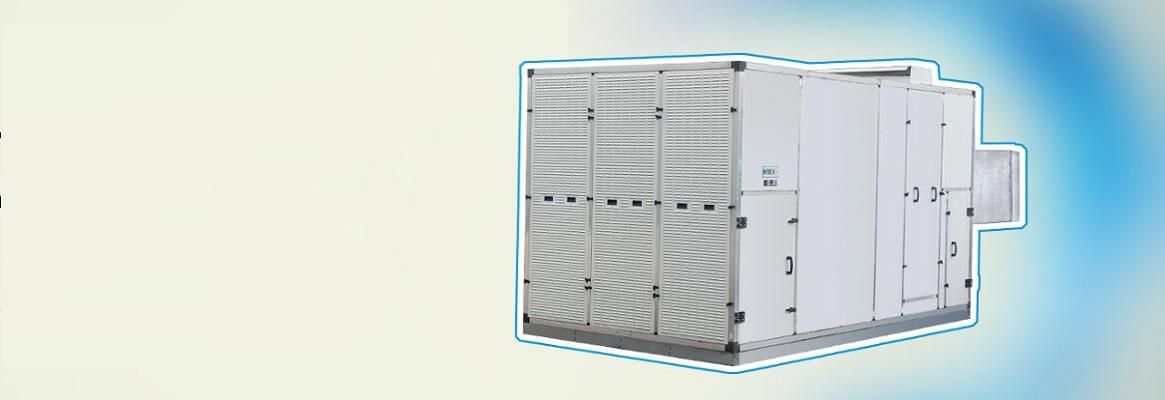It has been predicted by many that life will not be the same again post COVID-19. It holds true for every country across the globe. The most significant impact will be on the lifestyle of people. The things that were normal in pre COVID-era will no longer be considered normal, and there will be a “new normal” in place.
Air-conditioning, like many other facets of everyday lifestyle, is bound to change for sure. We have been hearing a lot from the HVAC experts on this subject in recent times - and ISHRAE, REHVA, ASHRAE and many other global associations of air-conditioning and ventilation engineers have published fresh guidelines for the safe use of air-conditioning in COVID-19 times. It is certain that these guidelines are here to stay for the future as well. Going forward, health and safety will be the primary criteria while operating HVAC systems or designing new systems, and “thermal comfort” will take a less important role. Let’s take a look at what’s been recommended by the experts mentioned above:


From among the three recommendations above, the single most important recommendation is the increase in fresh air ventilation in buildings. More fresh air will result in a higher number of air changes in buildings and thus will help in driving out contaminants and infectious particles effectively. While increased ventilation doesn’t guarantee the elimination of risk altogether, it is the safest way to reduce the chances of spread of disease. And why only COVID-19, it applies to other types of infections as well, which are likely to keep growing in number with each passing year.
Let us remember that we have paid and are still paying a heavy price in the COVID times and so every measure that would help us to mitigate the impact of the dreaded virus must be adopted as soon as possible. Reducing infection chances with an adequate volume of fresh air in every air-conditioned space should be the top priority now, way above thermal comfort.
But this is easier said than done. Cooling of fresh air comes with a whole lot of challenges, and the immediate dilemma that air-conditioning users and the designers will face is the associated increase in energy demand while bringing in more fresh air. To make the situation even more challenging, another very important guideline says – don’t use the room return air for pre-cooling of fresh air, as we can’t take any chance of cross contamination of fresh air, while exchanging heat with the return air. The existing practice of using treated fresh air or fresh air handling units, using energy recovery devices such as wheels, heat pipes or any such system working with room return air is a strict “No Go”.
So what are the options available? How can we strike a balance between following these vital guidelines and still avoid burning a hole in our pockets due to heavy energy bills? The time has come to explore uncommon methods that have not been very popular in the past, or we may say, have been playing second fiddle to the prevailing dominant paradigm of refrigerated air-conditioning. The technology of indirect evaporative cooling appears to be the unequivocal answer, and it can open up numerous safe possibilities in this new era. Let’s take a look at this option more closely.
Indirect evaporative cooling, when coupled with direct evaporative cooling, and popularly known as ‘two stage’ or ‘indirect direct evaporative cooling (IDEC)’ is capable of providing the right amount of cooling, with the right kind of humidity, in 8 out of 10 places across the globe. For example, in India, barring towns located in coastal areas, for the rest of the geographies, IDEC is the answer to meet the room conditions of 27-30˚C temp and 60 10% Rh. In the Middle East, the effectiveness of IDEC is even higher, and in some places, such as the central province of Saudi Arabia and interior regions of Kuwait, IDEC can provide year round comfort without any compromise. When it comes to cooling commercial buildings or industrial facilities in the safest way, IDEC is the optimum method - ensuring 100% fresh air and all this while keeping the energy consumption way below that of regular air-conditioning. For the places on the coast, which fall in hot & humid geographies, a modified form of IDEC hybridized with refrigerated cooling can be looked at as a healthy option, though it is a little more expensive in terms of capital expenditure than IDEC alone.

The most important role that indirect evaporative cooling (IEC) will play in future is in the safe pre-cooling of fresh air without using room return air. Integration of IEC in treated fresh air (TFA) units or fresh air handling units (FAHU) will help support the cause of increasing fresh air intake in buildings for adequate ventilation and making them safe. What’s more, the IEC enabled TFAs or FAHUs are compact in size, economical and offer very attractive paybacks when compared to other energy recovery ventilators (ERVs). Due to simplicity in design, these can easily be retrofitted to existing fresh air handlers. Naturally, for an effective project, due care should be taken in selecting the right kind of equipment, and a thorough analysis of savings must precede the decision.
While there are several challenges awaiting us in the days to come, it is our duty to start planning in advance and evaluating all options including those which might have not been taken seriously so far. This paper is an attempt to explore the best possible options in the ‘new normal’, post COVID-19 scenario, for safe and healthy living, with the required level of comfort.










Comments